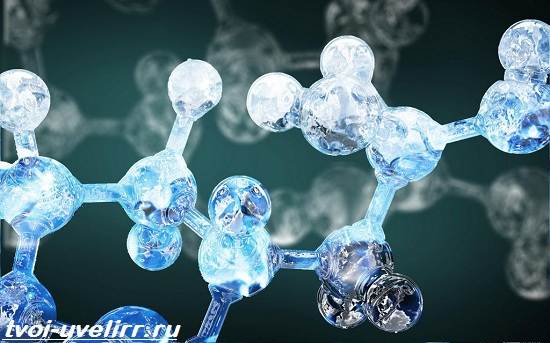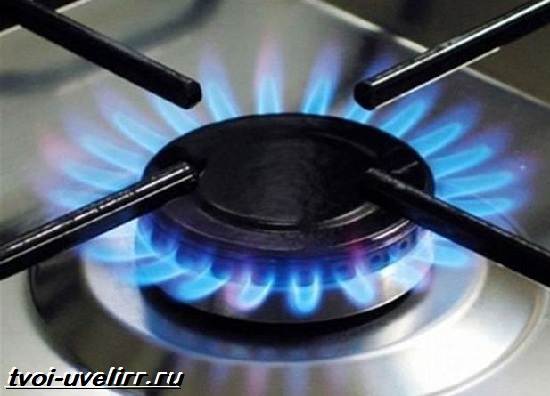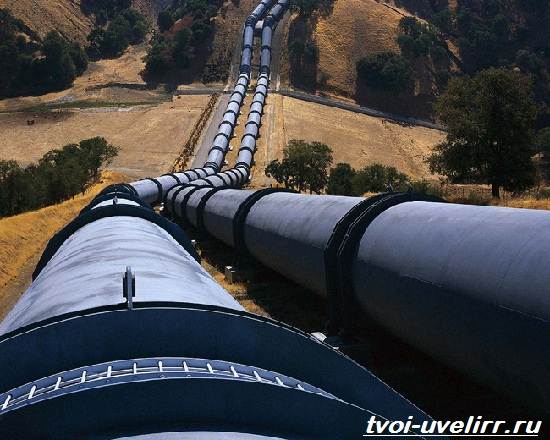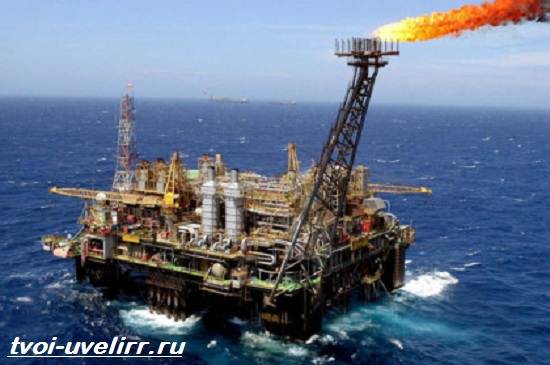Natural gas. Properties, production, application and price of natural gas
Price for natural gas revised for EU countries. In 2016, they asked for $167 for 1,000 cubic meters of fuel. In 2017, according to the February statements of the chairman of Gazprom, about 180 conventional units will be requested.
At the same time, the share of the European market of the Russian corporation is growing. Last year, the figure was 31%, this year - already 34%. In particular, deliveries to non-CIS countries increased by 12.5%.
In general, there is both demand and prospects. The absence of competitors allows prices to rise, leaving Europe as a priority market. The volumes of gas pipelines speak about the scale of the demand for fuel not only in the West, but also in itself.
Their total length in the Federation, for example, is equal to 20 equators. Moreover, this is not enough. They plan to build new networks. So, it is useful to talk about promising fuel. Let's find out what it is, different and how it turns out.
Properties of natural gas
The hero has a mixed composition. Volume of natural gas is made up of several. The main one is methane. Its in composition of natural gas more than 90% included.
The remaining 10% are propane, butane, carbon dioxide, and. Combining them under one name, experts put natural gas in 3rd place in terms of prevalence on Earth. In fact, bronze goes to methane.
It is called natural fuel because it is not synthetic. Gas is born underground from the decomposition products of organic matter. However, there is also an inorganic component in the fuel, for example,.
The exact composition depends on the locality, the resources present in its soils. Initially, natural gas reserves originated in silty sediments of reservoirs. Dead microorganisms and plants settled in them.
They could neither oxidize nor decompose, since there were no microbes in the environment, and oxygen did not penetrate there. As a result, organic deposits waited for the movements of the earth's crust, for example, a fault in it.
Il fell through, finding himself in a new trap. In the bowels of the earth, organics were affected by pressure and heat. The scheme is similar to the formation of oil. But, for it, lower temperatures and lower pressure are sufficient.
In addition, they have large hydrocarbon molecules. Natural gas - methane low molecular weight, like other fuel components. Its particles are microscopic.
The interaction between natural gas molecules is weak. This is what distinguishes matter from other states of aggregation, that is, liquids and stones. It is the structure that determines the main properties natural gas. Combustible.

The substance is highly flammable, and spontaneously ignites at 600-700 degrees Celsius. At the same time, the octane number of the fuel is 120-130. This parameter characterizes the detonation resistance.
The ability to resist spontaneous combustion is important in compression. It is no secret that they are mainly used liquefied natural gas. It is created from ordinary at low temperatures and high pressure.
The octane number of a gas is calculated by the ratio of flammable components to those that are difficult to oxidize when compressed. In gasoline, these are, for example, n-heptane and isooctane. Hence, in fact, the name of the number.
The calorific value of the hero of the article is close to 12,000 kilocalories per cubic meter. That is, combustion of natural gas gives 4 times more energy than combustion and 2 times more than when working with.
The calorific value of gas is equal to oil. At the same time, the hero of the article wins over a high-molecular hydrocarbon. In particular, natural gas application smokeless. Both oil and smoked. In addition, the gas burns without residue. Coals, for example, have unprocessed ash.
Although environmentally friendly, natural gas is dangerous. If you add 5-15% of the hero of the article to the air, it will self-ignite. The process, of course, takes place indoors. Home natural gas, as in the workshops, rises to the ceilings.
The fire starts from there. The reason is the lightness of methane. Air is almost twice as heavy. Here are the molecules of natural gas and rise to the ceilings. It is difficult to recognize the phenomenon, because natural gas has no color, no smell, no taste.
From a chemical point of view, the hero of the article meets the parameters of methane, that is, it enters into substitution, pyrolysis and dehydrogenation reactions. The former are based on the exchange of two or more substances by atoms. Pyrolysis is the decomposition by heating and in the absence of oxygen. Dehydrogenation is also called the reaction of splitting off organic hydrogen.

Even with a 4% content of heavy hydrocarbon impurities in natural gas, the properties of the hero of the article change. The parameters indicated in the article are averaged. However, any gas. What natural material goes input depends on the purpose.
Compositions with a predominance of methane are allowed for fuel. Gas, in which it is less than 90%, is considered technical, used in the chemical industry. The details of the process will be discussed in a separate chapter. In the meantime, let's deal with the places of gas dislocation in nature.
Extraction and deposits of natural gas
In nature, a gas is a gas. Liquefy it after extraction. Therefore, world fuel reserves are calculated not in kilograms or liters, but in cubic meters. Explored on the planet 200 trillion and 363 million.
Annual production has reached 3.6 billion cubic meters. They are supplied by Iran, Qatar, Turkmenistan, the USA, Arabia, the United Emirates and Venezuela. Countries are listed in descending order of gas reserves.
As the leader of the list, it has a super-giant Urengoy natural gas field. The deposit was named after the village, near which it was found back in 1966. In terms of fuel reserves, the Urengoyskoye field occupies the 3rd place on Earth.
16 trillion cubic meters of gas are hidden in the bowels. They have been developed since 1978, and since 1984 they have been exported to Europe. By 2017, 70% of the reserves have been depleted, that is, about 5 of 16 trillion cubic meters are left.
The Yamburskoye field is also referred to as a giant one. It is located in the same Yamalo-German district, opened 2 years later than Urengoysky. Natural gas production has been on an industrial scale since 1980. Initially, the reserves of the deposit amounted to 8.2 trillion cubic meters. By 2017, gas pantries were depleted by 4 trillion cubic meters.
Consumption of natural eider from a field where wells are drilled in permafrost conditions indicates the importance of the resource. To get the Yambursk fuel, they overcome from 1 to 3 kilometers of soil. 50 meters of them are permafrost.

There is another northern gas field on the Yamal Peninsula - Bovanenkovskoye. Its reserves are equal to 4.9 trillion cubic meters. They were discovered back in 1971, but they began to mine only in 2012. Therefore, in terms of current reserves, the deposit is comparable to the Yamburskoye and Urengoyskoye fields.
About 90 billion cubic meters are produced annually at the Bovanenkovskoye field natural gas. For the population peninsula enterprise - income and place of employment. Although, some go fishing outside the mainland.
Natural gas in Russia found in its sea areas. Thus, the Shtokman field is being developed between Murmansk and Novaya Zemlya. In other words, gas reserves are based on the bottom of the Barents Sea.
The depth at the gas production site does not exceed 400 meters. The deposit is not fully developed. So far, the process has been postponed until 2019. The volume of the deposit is estimated at almost 4 trillion cubic meters of gas.
Another offshore natural gas field is located in the south of the Kara Sea. For its proximity to St. Petersburg, it was named "Leningrad", opened back in the days of the USSR. The deposit's fuel reserves are estimated at 3 trillion cubic meters.
Rusanovskoye natural gas field was discovered on the continental shelf of the Kara Sea. So far, we are talking about 779 billion cubic meters of fuel. Forecasts predict an increase in the figure to 3 trillion cubic meters. The depth of gas occurrence complicates production. It is necessary to extract it from 1.5-2 kilometers.
Supply of natural gas from the bowels wells are carried out naturally. Light substance simply seeps through the pores in the rock. An area of low pressure is created in the well.
Where natural gas is based, it is high. Naturally, the fuel tends to enter the holes drilled by man. The deepest well in the well goes to a depth of 6 km and is located at the Urengoyskoye field.
Large gas deposits account for several wells. They are drilled at the same distance from each other, they are made equal. Otherwise, natural gas pressure in the layers of the earth's crust is distributed unevenly.
Some of the wells will simply remain unfilled. If you make only one hole in the ground, it is quickly flooded, that is, filled with water. Moisture rushes into the pores of the rocks, previously occupied by fuel, in general, follows it on its heels.
Application of natural gas
The obvious use of the hero of the article is fuel. To transport gas through pipes, it is dried. Moisture in the composition of the gas causes corrosion of pipes, and at sub-zero temperatures forms ice plugs, clogging the passages.
The hero of the article is also released from hydrogen sulfide with carbon dioxide. The latter is not regulated, but economically disadvantageous. Hydrogen sulfide should be no more than 2 grams per 100 cubic meters.
To prevent accidents, natural gas is odorized. In other words, the fuel is saturated with odorous components. They signal a gas leak. Since the fuel itself is odorless, millions of cubic meters can be lost without treatment.
In addition to fuel in cars and boiler houses, gas serves as a fuel. It has heating boilers, stoves. Some acquire gas lamps, illuminating their houses and yards.

Offshore natural gas production
In the chemical industry, natural gas, more precisely methane from it, serves as a raw material for the production of a number of plasticizers. Acetylene, methanol and hydrogen cyanide are also synthesized from natural gas. For example, acetate silk is made from acetylene. Hydrogen cyanide also, in many respects, goes to synthetic fibers.
They produced gas without wells. The fossil was stumbled upon in search of underground culinary solutions. They searched for her with bundles of bamboo stalks. Metal spears were attached to their ends. Here is the replacement of the drills.
Outside, the salt solution was pumped out with valves from. They looked like blacksmith's bellows. The gas came to the surface along with the solution. The Chinese dared to burn it in order to evaporate the mineral.
After draining the salt, they decided to carry the fuel through bamboo pipes to their huts. In general, the simplest version of the gas pipeline existed 8 centuries ago. At that time, they did not pay for natural fuel. In modern times, every cubic meter -. Let's take a look at the prices.
Natural gas price
Gaza is largely determined by the political factor. , as a market monopolist, dictates the rules. Of the objective factors, fuel is affected by the form of its transportation. Liquefaction and transportation in cylinders is expensive. Delivery of gas in its natural form directly through pipes is more profitable.
Sometimes, nature affects the cost of gas. After Hurricane Katrin, for example, in the United States, fuel production was reduced. Accordingly, the price tag on it jumped. The hurricane swept through the gas producing areas.
Gas, as a rule, is divided into the cost for strangers and their own. Thus, the cost of a cubic meter of Russian gas within the country does not exceed 8,80 kopecks. This is the tariff of 2017 in the Saratov region.
In Pskov, for comparison, they pay 5 rubles 46 kopecks. This tariff is close to the current one in most gasified regions. Accordingly, 1,000 cubic meters costs no more than 8,800 rubles, and usually about 5,500 rubles.
The minimum price tag for the current year for Europeans is about 11,000 rubles. This is the purchase price from the Russians. Westerners will naturally pay more for the fuel in their homes.


